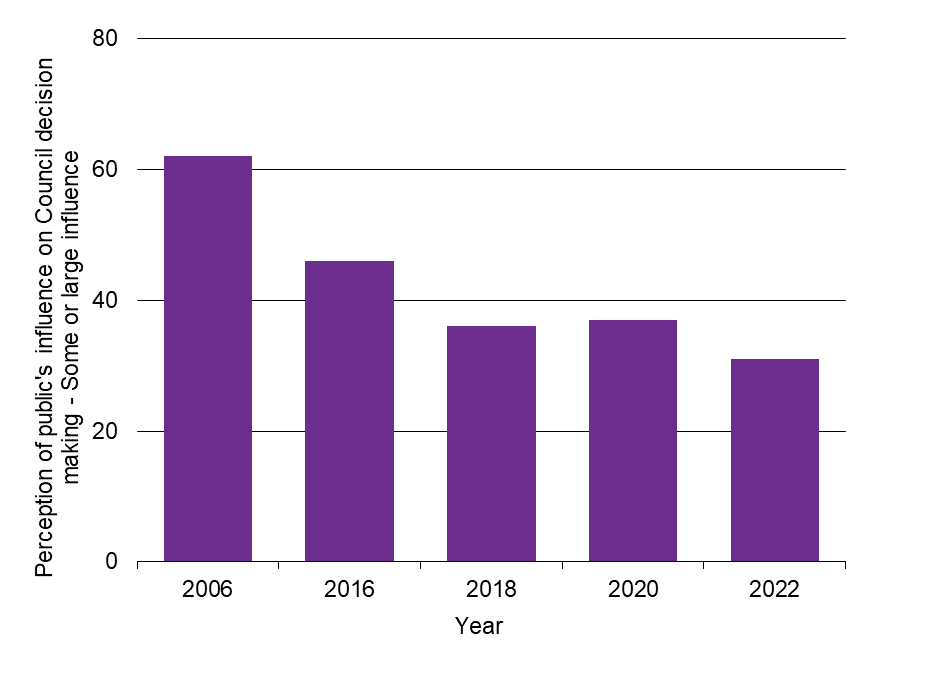Community engagement

 COMMUNITY ENGAGEMENT
COMMUNITY ENGAGEMENT
| WORSENING TREND |
(Note: trend indicator above is relative to 2007 WPI baseline year.)
Survey results show that compared to 2006, Waikato residents have become much less likely to agree that the public has an influence over the decisions their local council makes.
This indicator measures people's level of agreement that the public has influence on local council decisions, using information from the Quality of Life Survey.
Why is this indicator important?
Community involvement is critical for effective local government. People’s perception of their council's accessibility to include them into its decision-making processes, and the extent to which they feel they can have an influence over council decisions, is a measure of how adequate these processes are for community involvement.
Measuring people’s perception of the extent of public influence over local council decisions can assist councils in improving their community engagement processes. Greater engagement between councils and people living in the Waikato region can help councils become more representative of what residents and ratepayers want and need.
Community engagement

| Year | Some or large influence |
| 2006 | 62 |
| 2016 | 46 |
| 2018 | 36 |
| 2020 | 37 |
| 2022 | 31 |
| 2024 | 35 |
What is this indicator telling us?
- Compared to 2006, Waikato regional survey respondents in 2024 were much less likely to agree that the public has an influence over the decisions their local council makes (35% compared to 62% in 2006). This reflects a similar trend in other councils.
- Across the Waikato region in the 2024 survey:
- The percentage of people who agree the public has an influence over local council decisions ranged from 21% in Hauraki district to 45% in Waikato district.
- In terms of statistically significant differences, respondents were less likely to agree the public has an influence over local Council decisions if they identified with the NZ European/other ethnic group (29%) and were aged 50-64 years (24%), whereas respondents were more likely to agree if they identified with the Māori (40%), Pacific (51%) or Asian/Indian (51%) ethnic groups or were aged under 25 years (50%).
DATA SOURCE AND SUPPORTING INFORMATION
Indicator is the percentage of people who agree that the public have ‘large’ or ‘some’ influence over the decisions that their local Council makes. Data are from the Quality of Life Survey.
Update details: Waikato regional results are available for 2006, 2016, 2018, 2020, 2022 and 2024.
Customised data request requirements: Quality of Life data.
DATA AVAILABILITY – OTHER THAN WAIKATO REGION:
Territorial Authority (TA) disaggregation: Yes
Other regions: Yes
New Zealand: No (but 8 cities average is available)
Other countries/ Organisation for Economic Co-operation and Development (OECD): No
